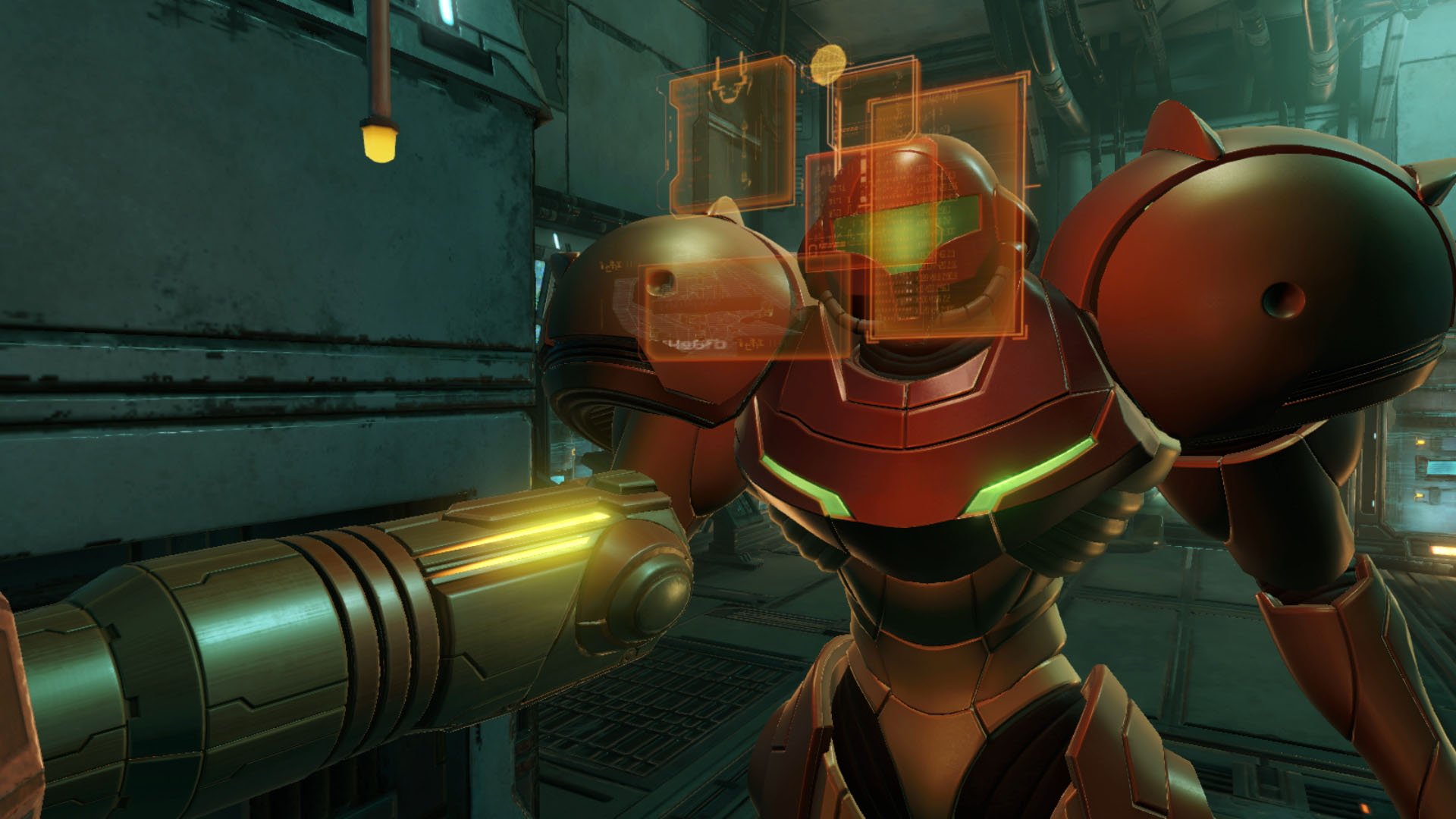
To this day, Metroid Prime on the Gamecube is one of the best examples of the metroidvania formula, and one of the few that’s worked well in 3D. But, somehow, in remastering the classic for Nintendo Switch, developer Retro Studios has made the game do things I didn’t even know were possible on the console.
Having played the re-release for myself on Nintendo Switch, Metroid Prime Remastered is something of a misnomer. In fact, the game strays dangerously close to full-on remake territory, with vastly overhauled geometry, all-new textures, and enemy models.
Unlike the recent Dead Space remake, Metroid Prime Remastered remains largely unchanged in terms of gameplay, progression, and control. Instead, Retro Studios has set a new bar that remastered games should strive for, and it stands out on a console overridden with poor quality ports and games with stark performance issues.
Touchdown

I’m very familiar with the opening of Metroid Prime. It starts off by putting you in the power suit of bounty hunter Samus Aran and letting you loose on a Space Pirate vessel overrun by parasites. The upgrades are immediately noticeable, enhanced lighting draws out the somber mood of the ship’s metallic corridors. But at this early stage, Metroid Prime Remastered hasn’t even begun showing us what it’s really capable of.
Escaping the vessel and landing on the planet Tallon IV, where the rest of the game takes place, you exit Samus’ ship to greet the overhauled flora and fauna. It was here I was encouraged to drink in the scenery for the first time. The rich, green overgrowth of the landing zone pops more than ever on the modern console, particularly if you have a Nintendo Switch OLED.
Metroid Prime Remastered shows that in the hands of a capable dev, this is a console very much still capable of incredible things
Looking up toward the sky, the heavy rainfall dripping onto Samus’ visor, there was just one thought in my head: “I can’t believe this is running on Switch.” And at a locked 60fps, no less. The Switch’s aging Tegra X1 processor holds back many of the best Nintendo Switch games when it comes to performance. Be it Bayonetta 3’s tipsy framerate or Pokémon Scarlet and Violet’s stark lack of detail, playing certain games has – perhaps wrongly – made me believe that the Switch was a little washed up.
And yet here comes Metroid Prime Remastered, showing that in the hands of a capable dev, this is a console very much still capable of incredible things.
Sign up for breaking news, reviews, opinion, top tech deals, and more.
As I explore the sufferingly hot climes of Magmoor Caverns, dusty Chozo Ruins, and the ice-cold Phendrana Drifts; I experience no performance drops, despite being so much more immersive and detailed than they were back in the Gamecube days.
Creative control

Another huge aspect of Metroid Prime Remastered is its commitment to replicating pretty much every control option the game’s ever had. While the new dual stick control scheme will suit newcomers versed in the best FPS games, Retro Studios has gone the extra mile to cater to all kinds of players.
Prefer the motion aiming introduced in the Metroid Prime Trilogy port? There’s an option for that. Want to mix right analog stick aiming with a touch of gyro for finer control? You can do that, too. Or if you’re really old-school, you can opt for the ‘Classic’ control scheme that perfectly mimics the original release’s button layout.
You can even go a step further and play with the Switch’s official Nintendo Gamecube pad, originally created for Super Smash Bros. Ultimate. I could only recommend this option to true purists, of course, but I love that the option’s even there to begin with.
And when it comes to gameplay, I’m a huge fan of one nifty quality of life update in particular. Previously, a press of the fire button would launch a single bullet at an enemy. Now, holding the button activates a three-round burst fire that’s great for quickly dealing with teems of lower-health enemies.
That also means if you press the button in a rhythm, you can maintain auto fire without constantly spamming it. It’s a blessing for my aging hands, for sure.
A glimpse of what’s to come
With the continued radio silence on Metroid Prime 4, it’s easy to feel jaded about the future of the franchise. Though, between the success of 2021’s Metroid Dread and the impeccable Metroid Prime Remastered, I’m now more confident than ever that the series has a bright future.
We’re not going to know anytime soon when Metroid Prime 4 will release, but the quality of Metroid Prime Remastered leads me to think the game’s in very good hands at Retro Studios. Sure, the game might get pushed back until the launch of the Nintendo Switch 2. But on more powerful hardware, that can only be in the game’s favor. All in all, it’s a pretty good time to be a Metroid fan.

Rhys is TRG's Hardware Editor, and has been part of the TechRadar team for over four years. Particularly passionate about high-quality third-party controllers and headsets, Rhys strives to provide easy-to-read, informative coverage on gaming hardware of all kinds. As for the games themselves, Rhys is especially keen on fighting and racing games, as well as soulslikes and RPGs.